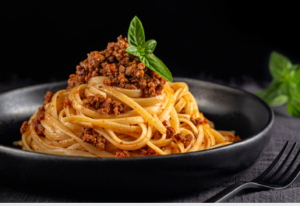Following proper food safety protocols is essential when ordering food from a pasta takeaway restaurant or delivery service. Doing so can help avoid food poisoning.
Pasta is one of the world’s beloved comfort foods. From upscale restaurants to bustling cafes, here are our top picks for delivery or takeout pasta options.
1. Fresh pasta
Pasta is one of those foods we all love to eat, so it’s no surprise there are such wide varieties here in New York. From fancy restaurants’ must-tries dishes to exciting new cafes’ unique options, there’s something for everyone here.
 While dried pasta is a common pantry item, fresh pasta has become an increasingly popular way to enjoy this classic Italian dish. Fresh pasta boasts a lighter and more delicate texture and flavour that can be paired with many different sauces.
While dried pasta is a common pantry item, fresh pasta has become an increasingly popular way to enjoy this classic Italian dish. Fresh pasta boasts a lighter and more delicate texture and flavour that can be paired with many different sauces.
Before making fresh pasta takeaway, set up a clean workspace free from clutter. It should include an extended kitchen table or an island free from dishes.
Once all ingredients are mixed (usually semolina flour), water or olive oil must be added), knead the dough until it becomes elastic and firm.
Once the dough has been kneaded, gently flatten it with a rolling pin or pasta machine. Then, depending on desired thickness, you can cut this thin pasta sheet into various shapes, such as noodles, orecchiette and ravioli.
Fresh pasta cooks quickly and effortlessly, so you can have a delectable meal in under ten minutes! Pair it with light, delicate sauces like pesto or Aglio olio for maximum enjoyment.
Fresh pasta can be stored in the refrigerator for two or three days, though keep in mind it has a shorter shelf life than dried varieties – so use it quickly! Another way to extend its shelf life is by drying it; this requires a sunny environment with minimal humidity for several hours.
2. Sauces
When it comes to pasta takeaway, there are various sauces you can add for extra flavour and enjoyment. Some pasta sauces are tomato-based, while others incorporate other ingredients for a unique taste.
Tomato-based sauces are the most common, but there is also a wide selection of other sauces. If your tastebuds don’t quite agree with tomatoes, these other dishes could be ideal for you.
You can find vegan and gluten-free pasta sauces. While these sauces may benefit those trying to be healthier or eat gluten-free, be sure your guests are comfortable with them before serving them.
Many sauces can be easily made at home. Not only are they less time-consuming to prepare than one might think, but they save money, too – so if you want to add an extra special touch to your next pasta night, consider making some homemade sauces!
3. Vegetables
Vegetables are integral to many cuisines, whether as a main course or a side dish. They can be steamed, roasted, blended into stir-fry dishes and much more to create delicious meals.
Vegetables provide essential nutrients and vitamins. Eating more vegetables can improve your health by increasing dietary fibre intake and decreasing the risk of heart disease, cancer, stroke, high blood pressure, and other chronic illnesses.
Some vegetables are more nutrient-rich than others. Carrots, for instance, boast high vitamin A levels, which are vital in maintaining eye health as you age. Furthermore, carrots contain plenty of potassium – an essential mineral that helps your kidneys filter sodium out of the body more efficiently.
Vegetables can be found in all parts of plants – seeds and stems included, as well as roots and bulbs.
Cutting them into uniform pieces, no matter the vegetable, helps ensure they cook evenly and produce a more even texture when combined with pasta. It will prevent overcooking and provide an even taste when combined.
4. Cheese
Cheese is a delicious and versatile ingredient used as a sauce, topping, filling or sandwiching food. Its savoury nutrients help promote digestion, regulate blood sugar levels and lower cholesterol.
Cheese is created by mixing milk with salt, culture and coagulant. These components help the milk turn into curds that harden into a solid.
Rennet is a common ingredient used in cheese production. This chemical causes the protein kappa casein to break down into para-kappa casein, creating the creamy consistency characteristic of cheddar. Most rennet used in cheese is lab-produced; however, some cheesemakers still employ traditional methods.
Most cheeses are produced using moulds or forms, which press out excess moisture and solidify the curds into a solid mass. It makes storing and preserving the cheese’s quality more accessible over time.